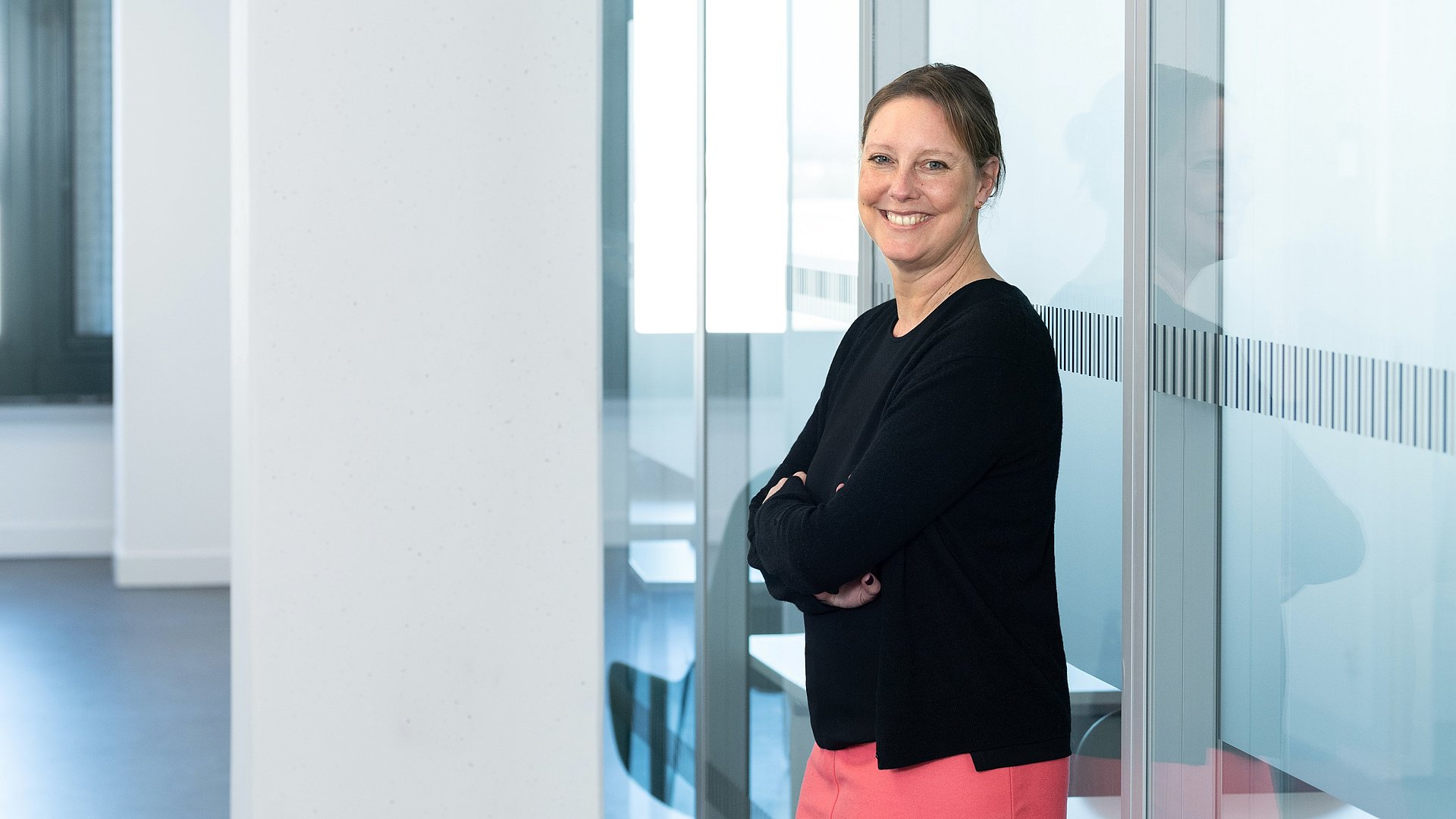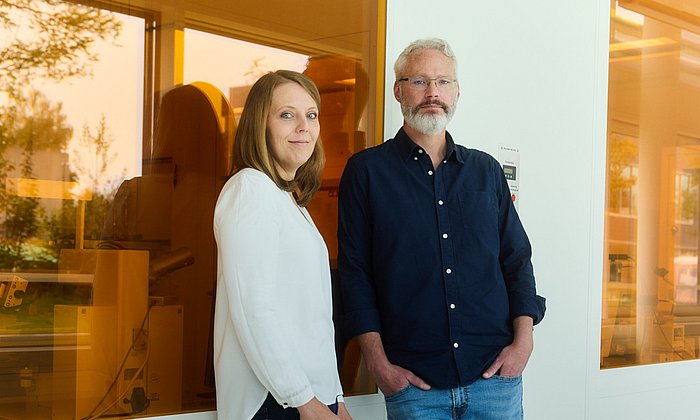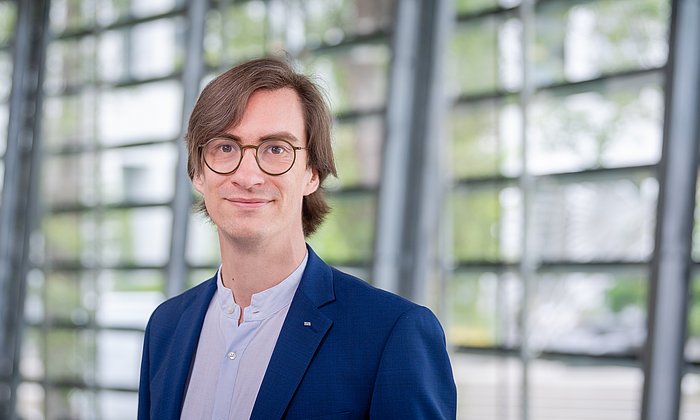E-conversion Cluster of Excellence
Creative ideas for the energy transition

Prof. Bein, you were closely involved in the beginnings of the Cluster of Excellence together with your TUM colleagues Ulrich Heiz and Karsten Reuter, who now conducts research at the Fritz Haber Institute of the Max Planck Society. How did the idea for e-conversion come about in the first place?
Thomas Bein: In Munich, a focus on nanosciences has developed over many years, in which we have investigated the question of how different nanostructures can be constructed and studied. This gave rise to the idea and the desire to use this outstanding expertise to make energy conversion processes more efficient. Basically, we use the knowledge from nanoscience to build precisely defined model structures and thus answer mechanistic questions of energy conversion.
In practical terms, does that mean improving a particular energy conversion process?
Thomas Bein: Almost all energy conversion processes we use today can be made more efficient. That's why, at e-conversion, we don't just focus on photovoltaic or battery research, we want to understand: Are there common effects and phenomena? Can we use this knowledge to improve photoelectrochemical, photovoltaic and photocatalytic systems almost simultaneously?
This fundamental approach is not easy to explain. Wouldn't it be easier to research a specific application than to optimize overarching processes?
Thomas Bein: The classic approach is indeed more vertical, for example in photovoltaics, looking for the best, most stable material to capture sunlight and convert it into electricity and then optimize it for mass production. In contrast, e-conversion has positioned itself very broadly. That took some convincing but in the end, our approach was enthusiastically received. And we have been very successful so far.
Jennifer L.M. Rupp: Although there are very different classes of materials in energy research, certain mechanisms are similar. For example, the transport processes of charge carriers or ions at interfaces - whether in batteries or photovoltaic cells. We see the results in numerous publications and patents, in industrial collaborations and start-ups - and special initiatives such as the founding of the SolBat Center. Solar batteries that combine optical and electrical components are being researched there. In a way, the center is a vertical branch of e-conversion's broad-based research.
What the energy of the future will look like is one of the big questions of our time. Is the e-conversion model being copied, is there competition?
Thomas Bein: It certainly takes courage—and people who commit to this adventure. We are fortunate to have excellent colleagues on board. The atmosphere and culture of the former Nanosystems Initiative Munich (NIM) was already extremely exploratory and pioneering. It bridged the gap between quantum processes and complex biological phenomena. We are benefiting from that now. Munich has a strong scientific community with researchers ready for new challenges. And, of course, the issue of efficient energy conversion is a pressing one worldwide. There are some substantial initiatives in the U.S., such as the Center for Artificial Photosynthesis in California, with a similar scale to an Cluster of Excellence, but it's not as broad. We are quite unique in this respect!
Jennifer L.M. Rupp: I only joined a few years ago from MIT and it is absolutely fascinating what has been created here in Munich. Especially the creative exchange and the enriching atmosphere.
Thomas Bein: That may also be due to our egalitarian approach. It has already proven its worth at NIM. All principal investigators are treated equally. And we had the courage to cover a broad range of disciplines: from inorganic and organic synthesis, materials science, theoretical chemistry and physics to catalysis and battery cell research - to name just a few examples. This can be challenging for interdisciplinary collaboration, but it leads to new ideas and fuels creativity immensely.
I would like to see all cluster proposals on energy research accepted. We urgently need this in Europe.
What highlights and major discoveries from e-conversion 1.0, i.e. the first funding period, would you name?
Jennifer L.M. Rupp: For me, solar batteries are one of them. The solar cell and battery are not separate, but are integrated into a single component. It converts sunlight directly into electrochemical energy and stores it. This is the key innovation in solar batteries. Another equally important highlight is optics. This completely new field of research deals with the control of ions using light. The idea is that light can make ions move faster in a material or at an interface. This enables faster charging times or larger storage capacities in applications such as batteries. In the unique SolBat center I mentioned earlier, we are trying to design materials in which this optical excitation works. These research approaches fit perfectly with e-conversion because they combine many physical considerations, from photovoltaics to particle mechanics. Optoionics promises enormous potential for various solar and optical applications, not only in energy storage and conversion, but also in information technology.
When will this dream of a battery that chemically stores solar power directly and solves our energy problems come true?
Thomas Bein: There's still a long way to go. It's also not necessarily the goal of the Cluser of Excellence Cluster to design such a component. Our task is to find the basic concepts for batteries that will be on the market in 15 or 20 years. But we are not far from comprehensive solutions. The vision of solar
panels with energy-storing layers is realistic. This means that there is already a huge storage area for solar energy — and it even works in Bavaria!
Jennifer L.M. Rupp: We have to keep in mind that the sun provides 170,000 terawatts of energy for free, while the world only needs 23,000 terawatts. The question is how to store it quickly and efficiently.
Is there another highlight from e-conversion 1.0?
Thomas Bein: The development of a fascinating class of substances for solar cells, perovskites, is worth mentioning. Typically, the absorbing materials in solar cells are made of silicon, which works well and is very stable. However, the manufacturing process is expensive, and the efficiency of solar cells is limited to about 25 percent. For higher efficiency, tandem cells are needed, which consist of different layers of material optimized for the respective spectrum of sunlight, thus increasing the efficiency of solar cells. Perovskites are a promising candidate for this because they combine many very favorable properties. However, the compounds are not as stable and contain toxic lead. We wanted to change that and produce perovskites with non-toxic elements. This led to a successful research story. We designed new strategies, developed syntheses, and finally created a non-toxic "anti-perovskite"—simply put, element groups in the highly characteristic crystal structure switch places. That was a brilliant idea developed jointly by our research groups. Such teamwork is typical of e-conversion. Although we haven't yet improved the stability of anti-perovskites, solutions similar to the protective coatings in LED displays can be found. This example shows how we systematically approach material optimization.
Are there other examples where e-conversion teams have worked so closely together?
Thomas Bein: Our research groups working on antenna phenomena are a good example of horizontal networking. They are working on nanostructures that can be used to concentrate light very strongly and locally. This in turn is relevant for catalytic processes - in other words, photocatalysis, i.e. chemical reactions driven by light. This is extremely interesting for producing hydrogen sustainably or converting CO2 into renewable fuels.
e-conversion deals with the question of energy - one of the world's major issues. Is there enough research being done?
Jennifer L.M. Rupp: Renewable energies and sustainable energy conversion and storage are some of the most pressing issues of the future. I would like to see all the cluster proposals related to energy topics accepted. We really need this in Europe.
Thomas Bein: Indeed! e-conversion shows that TUM and LMU are consciously addressing this important question about our energy future. A key factor is that we have reached a critical mass of experts from various fields, such as physics, chemistry, and materials and nanoscience, here in Munich. We are strong enough to succeed with the researchers from the participating Max Planck Institutes—that is, the Fritz Haber Institute, MPI for Solid State Research, MPI for Energy Conversion, and MPI for Coal Research. During the first funding period of e-conversion, we built excellent high-tech equipment. This includes electron microscopy and X-ray spectroscopy, which have taken our research to a whole new level. We can now in effect watch individual atoms in real-time during battery discharging. This yields tremendous insights. Additionally, we have attracted excellent scientists who are helping us move closer to our great goal with their research.
It takes people who are brave enough to try unconventional approaches.
What is the biggest motivation for you to work on e-conversion?
Jennifer L.M. Rupp: At the end of the day, our research has to have an impact. There are many different currencies for that. One of them is publications. Over 930 papers have been published in e-conversion. But innovation also means creating intellectual property - in other words, patents. They are the basis for faster development of ideas with industrial partners. This knowledge can also flow into the creation of start-ups. Munich has created an excellent ecosystem for this, especially with UnternehmerTUM and TUM Venture Labs. Seven start-ups have been successfully spun off from e-conversion, covering a wide range of fields - from batteries and catalysis to renewable fuels and innovative measurement technologies. This is another example of the horizontal orientation of the Cluster of Excellence.
Thomas Bein: All these successes are only possible because of the many people who contribute to them. In particular, I would like to mention the more than 240 postdocs, PhD students and doctoral candidates who have been very active in e-conversion and have carried the spirit of e-conversion forward. It takes people who are brave enough to take unconventional approaches and think "outside the box". This is motivating and fun and generates many new ideas, impulses and innovations!
- e-conversion is one of currently four Clusters of Excellence at TUM.
- You can find out more about energy research at TUM at tum.de/energy.
Technical University of Munich
Corporate Communications Center
- Jeanne Rubner
- jeanne.rubner@tum.de
- presse@tum.de
- Teamwebsite
Contacts to this article:
Prof. Dr. Jennifer L.M. Rupp FRSC
Professorship of Solid-State Electrolytes
TUM School of Natural Sciences






